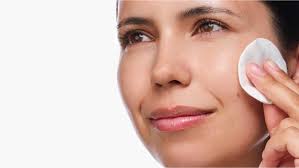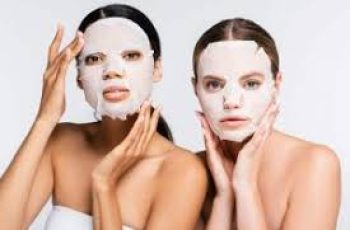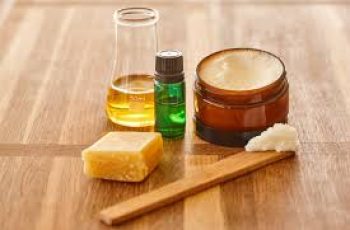
Argireline in Skincare: What You Need to Know About the “Botox in a Jar”
Argireline has gained attention in the beauty world as a peptide that mimics Botox. But is it really the miracle wrinkle-reducer it’s often marketed to be?
Let’s break down the science, the hype, and the facts about Argireline, also known as Acetyl Hexapeptide-8.
What Is Argireline?
Argireline is a synthetic peptide used in many anti-aging creams and serums. It’s commonly included in skincare designed to reduce fine lines and facial wrinkles.
Its popularity exploded when companies started calling it “Better than Botox”, a claim that’s been widely misunderstood.
Unlike Botox, Argireline is applied topically, not injected. This difference is crucial because it impacts how well the product actually works.
How Does Argireline Work?
Argireline works by mimicking SNAP-25, a protein involved in the SNARE complex, which helps nerve cells send messages to muscles.
Botox works by disrupting this SNARE complex, paralyzing facial muscles and reducing expression lines.
Argireline aims to disrupt this same complex but without injections. However, there’s a big catch: it can’t penetrate deeply enough into the skin to reach the underlying muscles.
So while the science behind it sounds similar to Botox, the real-world effects are much more limited.
Can Argireline Replace Botox?
No. Argireline is not a substitute for Botox injections.
Here’s why:
Botox is injected directly into the muscle.
Argireline is applied to the surface of the skin.
Topical peptides, including Argireline, don’t reach deep enough to affect muscle movement.
Lab studies show interesting effects, but these are done on isolated cells or tissue cultures—not on actual human faces.
In clinical use, Argireline may reduce surface-level fine lines, but it does not freeze or relax muscles like Botox can.
Benefits of Argireline in Skincare
Although it’s not Botox, Argireline does have some benefits, especially for short-term improvements in skin appearance.
1. Reduces the appearance of fine lines
Argireline may slightly relax the skin’s surface, making lines look less deep.
2. Improves hydration
Some studies show that it helps the skin retain moisture, reducing transepidermal water loss (TEWL).
3. Enhances skin smoothness
When applied regularly, Argireline may make skin feel smoother and appear firmer—but this effect may wash off.
4. May improve skin firmness temporarily
By coating the skin, it may reduce anisotropy, a measurement related to firmness.
However, many of these effects may be due to surface-level coating rather than true biological changes.
Other Names for Argireline
Argireline is the trade name for Acetyl Hexapeptide-8, which was previously listed as Acetyl Hexapeptide-3.
You may see it written in ingredient lists like this:
Acetyl-Glu-Glu-Met-Gln-Arg-Arg-NH2
Ac-EEMQRR-NH2
These are the molecular building blocks that make up the peptide.
What Does the Research Say?
Let’s take a closer look at some of the key studies on Argireline and what they actually found.
Study 1: 10% Argireline Cream vs. Placebo (2002)
Participants: 10 women
Application: Around the eyes, twice daily for 30 days
Results: 30% reduction in wrinkles with Argireline cream, 10% with placebo
Concerns:
The study was not blinded.
No mention of statistical significance.
Results could be influenced by bias or the placebo effect.
Study 2: Skin Firmness Study (2015)
Participants: 40 women
Peptide: Acetyl Hexapeptide-3
Method: Applied twice daily to the forearm and face
Findings:
Hydration improved in all groups.
Skin anisotropy (firmness) improved only on the face.
No improvement in skin elasticity.
Interpretation:
The surface coating effect of peptides might give temporary firmness, but it doesn’t change skin biology long-term.
Study 3: Combination Peptide Study (2017)
Peptides Used: Acetyl Hexapeptide-3 + Tripeptide-10 Citrulline
Duration: 60 days
Result: Slight reduction in skin roughness after 60 days, not before
Issues:
No data on wrinkle depth
Abstract presentation lacked transparency
Benefits may be due to moisture retention, not true anti-aging action
How Does Argireline Compare to Other Ingredients?
Let’s see how Argireline stacks up against proven anti-aging ingredients.
1. Retinol (Vitamin A)
Boosts collagen
Treats fine lines, wrinkles, and uneven texture
Winner: Retinol. Far more effective with deeper biological activity.
2. Vitamin C (Ascorbic Acid)
Brightens skin
Protects against free radicals
Winner: Vitamin C. Proven to improve skin tone and reduce signs of aging.
3. Peptides (General)
Support collagen
Improve firmness
Winner: Depends on the peptide. Argireline works only on the surface.
4. Exosomes and Growth Factors
Promote cell repair
Stimulate collagen and elastin production
Winner: Exosomes. Cutting-edge technology with promising research.
Bottom line: Argireline may offer a temporary boost in appearance, but it does not treat the root causes of aging.
Does Argireline Penetrate the Skin?
One study did show that Argireline can pass through the top layer of the skin. But to actually reach muscle, it would need to penetrate much deeper, which it does not.
That’s why its effects remain at the surface level—mainly smoothing and moisturizing, not muscle relaxation.
Is Argireline Safe?
Yes, Argireline is considered safe for topical use. It doesn’t carry the risks associated with injections or systemic drugs.
Potential side effects:
Mild irritation, if used near eyes or broken skin
Temporary tightness on the surface
Most people tolerate Argireline well, especially in properly formulated skincare.
Is Argireline Worth Using?
Argireline is worth considering if you:
Want to smooth fine lines temporarily
Are looking for a non-invasive option
Use it alongside stronger anti-aging ingredients
However, it won’t deliver dramatic or lasting results on its own. It’s best seen as a supporting ingredient in a more comprehensive skincare routine.
How to Use Argireline in Your Routine
Here are some tips to get the most out of Argireline:
Apply on clean skin, preferably after a gentle cleanser and toner.
Use in serum or lightweight cream form for best absorption.
Combine with moisturizers, antioxidants, or retinol for enhanced results.
Don’t expect Botox-like effects, but do expect short-term surface smoothing.
Final Thoughts: Is Argireline the “Better Than Botox” Skincare Ingredient?
Let’s be clear: Argireline is not better than Botox.
It may soften the appearance of fine lines and add a short-term glow, but it does not affect facial muscles.
Use Argireline as part of a layered routine—not a replacement for stronger ingredients like retinol, vitamin C, or growth factors.
If you’re serious about anti-aging, consider speaking with a dermatologist about combining topical products with professional treatments.
Quick Recap
What is Argireline? A topical peptide also known as Acetyl Hexapeptide-8
What does it do? Temporarily smooths skin by mimicking SNAP-25 protein
Does it replace Botox? No. It doesn’t penetrate deep enough to affect muscles
Is it safe? Yes, with minimal side effects
Is it effective? Only mildly. Works best with other actives in your routine


